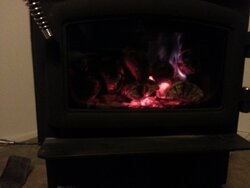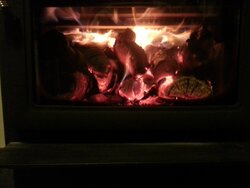getting all the info I can about operating this stove tonight... this is a new stove for us, so please excuse the cluelessness...
the stove has been broken in, now trying to get the fire going correctly!
my main question here is about the secondary burn. I got the stove up to about 600, closed the draft control most of the way, and all the flame went out. You should be able to see the secondary burn in the top of the stove right?? I know I just need to get used to the stove (first night using it tonight). But the Glass is now mostly black, not staying clean
the stove has been broken in, now trying to get the fire going correctly!
my main question here is about the secondary burn. I got the stove up to about 600, closed the draft control most of the way, and all the flame went out. You should be able to see the secondary burn in the top of the stove right?? I know I just need to get used to the stove (first night using it tonight). But the Glass is now mostly black, not staying clean





